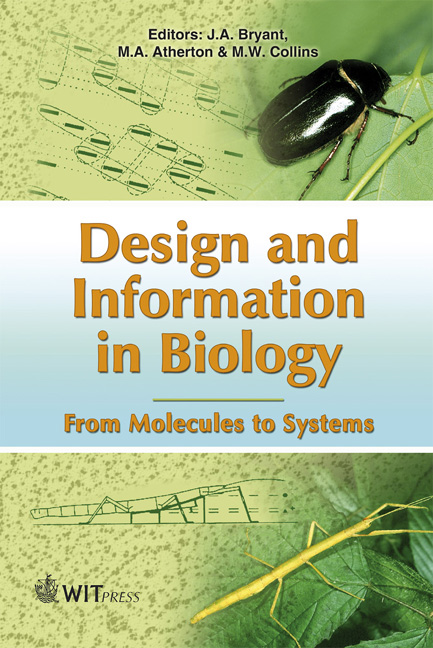Green Grass, Red Blood, Blueprint: Reflections On Life, Self-replication, And Evolution
Price
£23.00
Volume
27
Pages
68
Published
2007
Size
1498 kb
Paper DOI
10.2495/978-1-85312-853-0/03
Copyright
WIT Press
Author(s)
M. Ciofalo
Abstract
Chapter 3 Green grass, red blood, blueprint: reflections on life, self-replication, and evolution M. Ciofalo Dipartimento di Ingegneria Nucleare, Università degli Studi di Palermo, Italy. Abstract Following pioneering work by von Neumann in the late 1940s, the goal of achieving selfreplication in artefacts has been pursued by a variety of approaches, involving either virtual entities like cellular automata and computer programs or, to a lesser extent, real physical devices. An ample review of the major achievements in these diverse fields is given, and their practical and theoretical relevance is discussed. Possible future developments, notably regarding nanotechnology and space exploration, are also outlined. The most relevant theoretical problems posed by self-replication are discussed in the light of current knowledge regarding life and its origins. Living entities are semiotic systems, in which physical structures have come to perform symbolic functions. The great complexity of biomolecules and of even the most primitive organisms is not a gratuitous complication, but a necessary condition for homeostasis, self-replication and openended evolution in a changing environment. Such requisites will have to be matched by artificial devices if their non-trivial self-replication and autonomous development are to be attained. 1 Of crystals and colloids Wordsworth’s God had his dwelling in the light of setting suns. But the God who dwells there seems to me most probably the God of the atom, the star, and the crystal. Mine, if I have one, reveals Himself in another class of phenomena. He makes the grass green and the blood red. (J.W. Krutch, 1950, [1]) The lines in the epigraph are excerpted from the famous essay ‘The colloid and the crystal’, written in 1950 by the American literary naturalist JosephWood Krutch. The best known passage of the essay is probably the following: ‘A snowflake under a lens and an amoeba under a
Keywords





